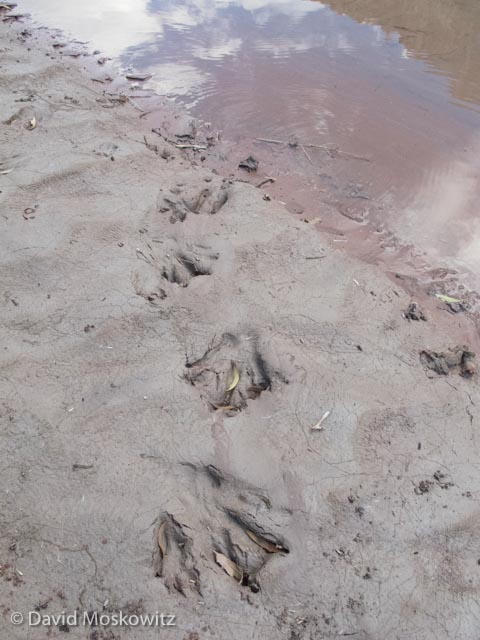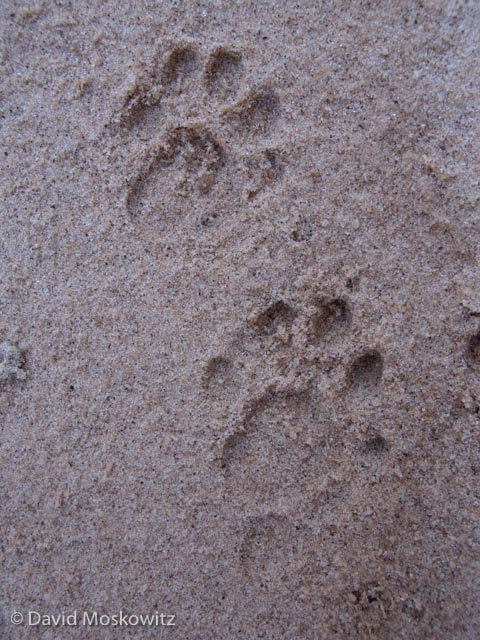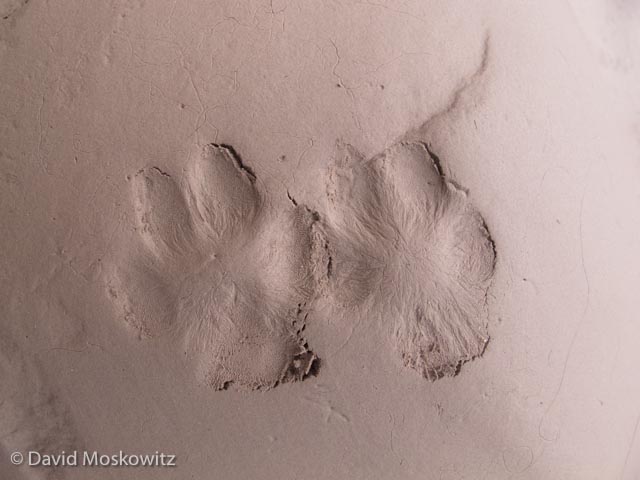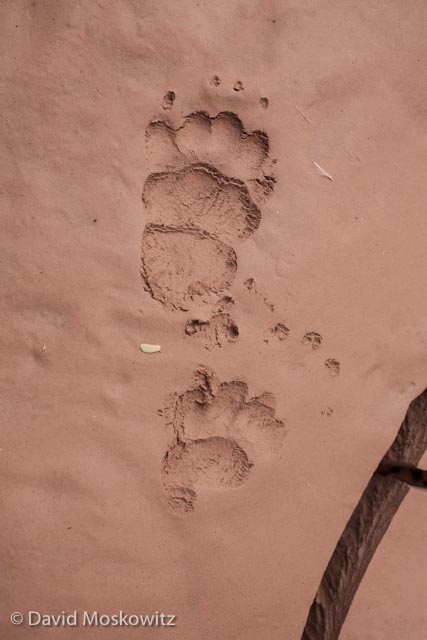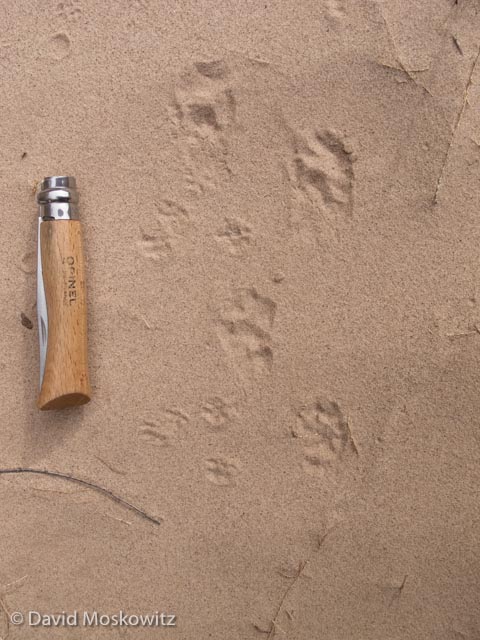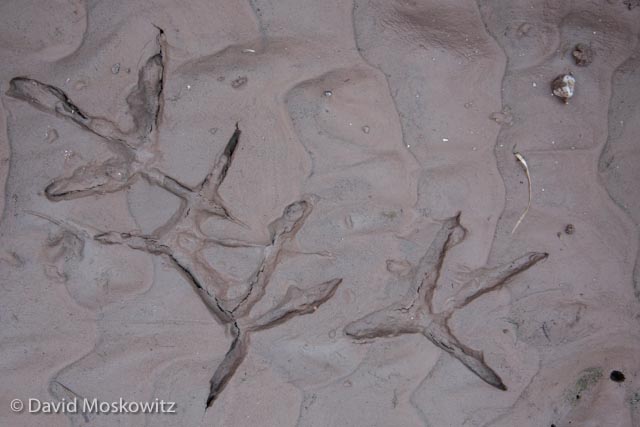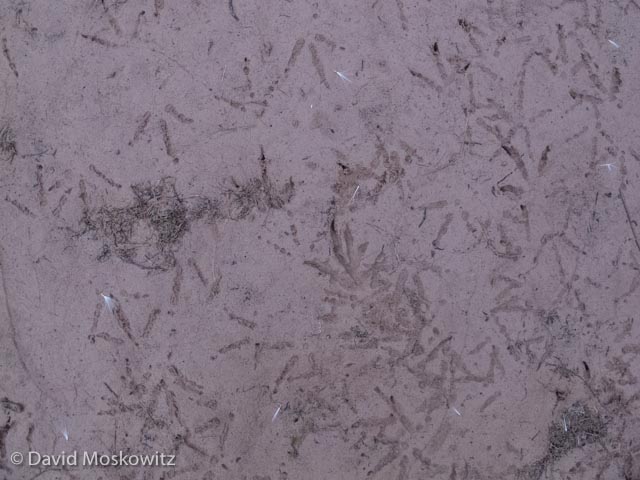
The drag marks created by the tail of a beaver in loose sand is one of the most common tracks observed along much of the Colorado River in the Grand Canyon.

Front (below) and hind tracks of a grey fox. Fox tracks were common along the river throughout the canyon. This small lighter is a little less that 2.5 inches long. Fox tracks are typically slightly less than 2 inches in length. Grand Canyon, Arizona.

Scat from a ringtail on top of a can of food. Ringtail's often sneak onto rafts at nigth to raid expeditions fruit supply. They prefer apples to oranges. Their amazing ability to get into tight spaces allows them to get into just about anywhere they want to on a boat.
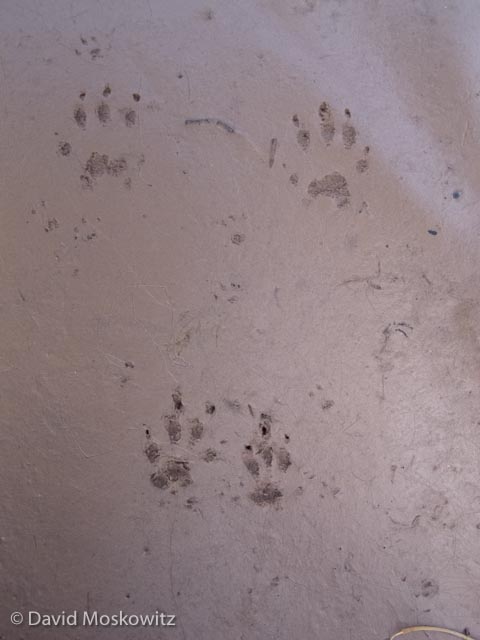
The typical bounding track pattern of a rock squirrel. Their tracks are suprising large (about .75 inches long). Grand Canyon, Arizona.
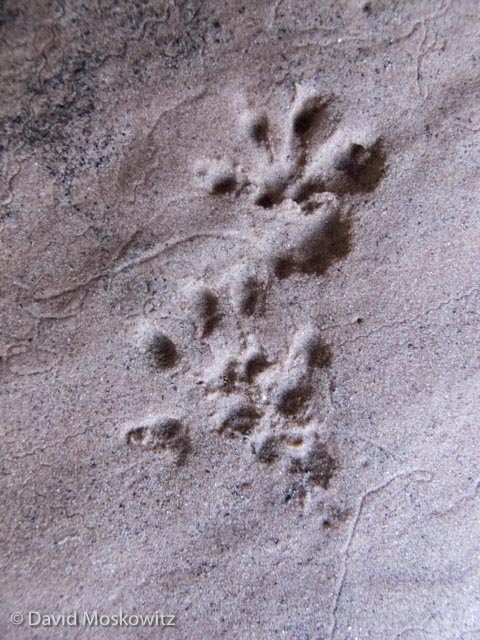
Right front (above) and hind (below) tracks of a bushy-tailed woodrat. Tracks are about half an inch in lenght. Grand Canyon, Arizona.
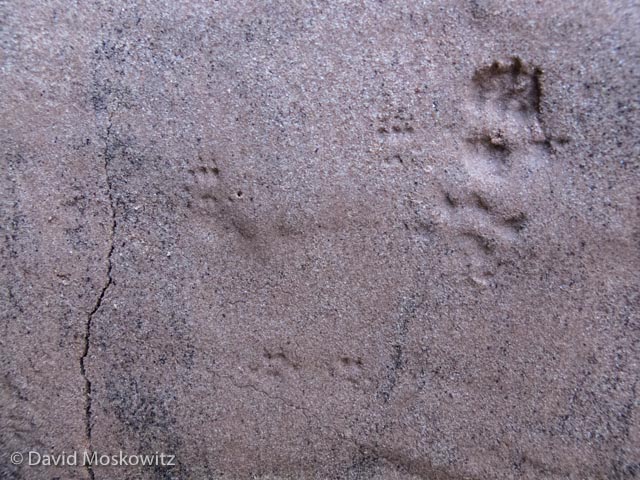
The bounding pattern of a deer mouse can be seen faintly next to the much larger tracks of a woodrat to the right. Grand Canyon, Arizona.
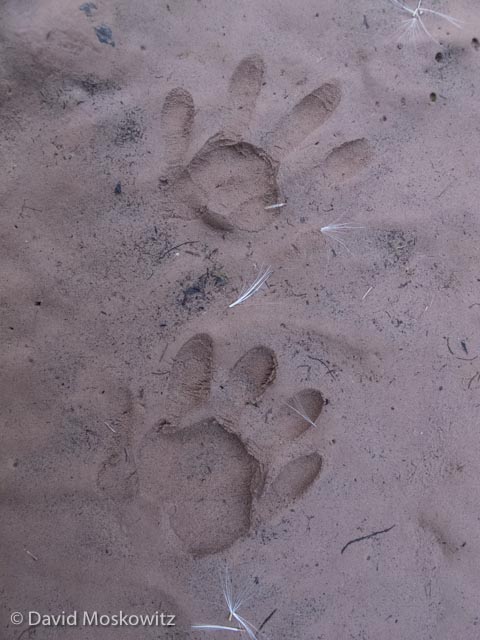
The handland tracks of a northern racoon. This species tracks didn't start appearing on the river until the lower strech of the canyon. Grand Canyon, Arizona.
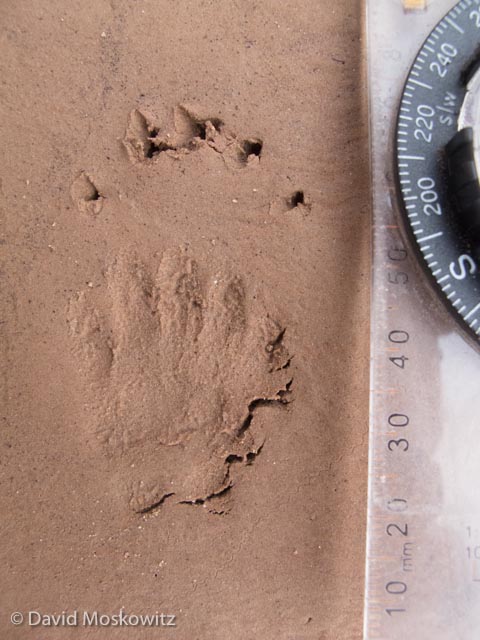
The long claws are one of the clues that this is the front foot of a striped skunk. Grand Canyon, Arizona.

Burrow holes of a Merriam's kangaroo rat. Desert specialists, kangaroo rats spend their days underground where they avoid the heat of day and conserve water. They come out at night to forage. Grand Canyon, Arizona.
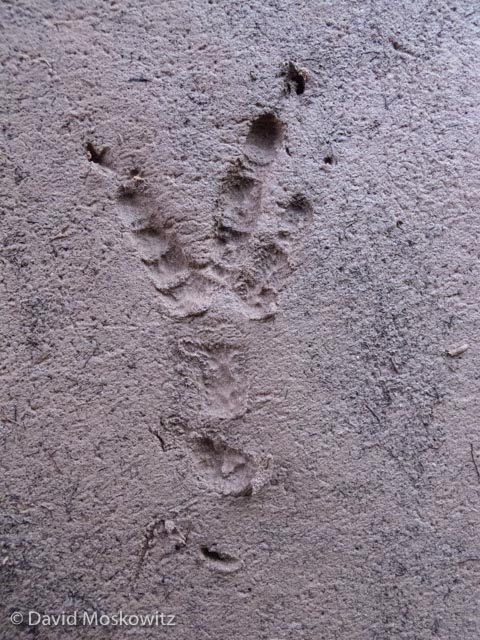
Common raven tracks, about 3.75 inches in length are common to find in and around human camps where they come to forage for scraps that humans may have left behind.

